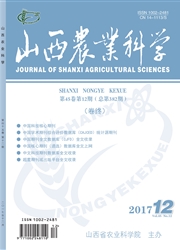

 中文摘要:
中文摘要:
This review charts the major developments in the genetic manipulation of plant cells that have taken place since the first gene transfer experiments using Ti plasmids in 1983. Tremendous progress has been made in both our scientific understanding and technological capabilities since the first genetically modified(GM)crops were developed with single gene resistances to herbicides, insects, viruses, and the silencing of undesirable genes. Despite opposition in some parts of the world, the area planted with first generation GM crops has grown from 1.7 Mhm~2 in 1996 to 179.7 Mhm~2 in 2015.The toolkit available for genetic modification has expanded greatly since 1996 and recently Nobel Laureates have called on Greenpeace to end their blanket opposition,and plant scientists have urged that consideration be given to the benefits of GM crops based on actual evidence. It is now possible to use GM to breed new crop cultivars resistant to a much wider range of pests and diseases, and to produce crops better able to adapt to climate change.The advent of new CRISPR-based technologies makes it possible to contemplate a much wider range of improvements based on transfer of new metabolic pathways and traits to improve nutritional quality, with a much greater degree of precision. Use of GM, sometimes in conjunction with other approaches, offers great opportunities for improving food quality, safety, and security in a changing world.
 英文摘要:
英文摘要:
This review charts the major developments in the genetic manipulation of plant cells that have taken place since the first gene transfer experiments using Ti plasmids in 1983. Tremendous progress has been made in both our scientific understanding and technological capabilities since the first genetically modified (GM) crops were developed with single gene resistances to herbicides, insects, viruses, and the silencing of undesirable genes. Despite opposition in some parts of the world, the area planted with first generation GM crops has grown from 1.7 Mhm(2) in 1996 to 179.7 Mhm(2) in 2015. The toolkit available for genetic modification has expanded greatly since 1996 and recently Nobel Laureates have called on Greenpeace to end their blanket opposition, and plant scientists have urged that consideration be given to the benefits of GM crops based on actual evidence. It is now possible to use GM to breed new crop cultivars resistant to a much wider range of pests and diseases, and to produce crops better able to adapt to climate change. The advent of new CRISPR-based technologies makes it possible to contemplate a much wider range of improvements based on transfer of new metabolic pathways and traits to improve nutritional quality, with a much greater degree of precision. Use of GM, sometimes in conjunction with other approaches, offers great opportunities for improving food quality, safety, and security in a changing world.
 同期刊论文项目
同期刊论文项目
 同项目期刊论文
同项目期刊论文
 期刊信息
期刊信息
